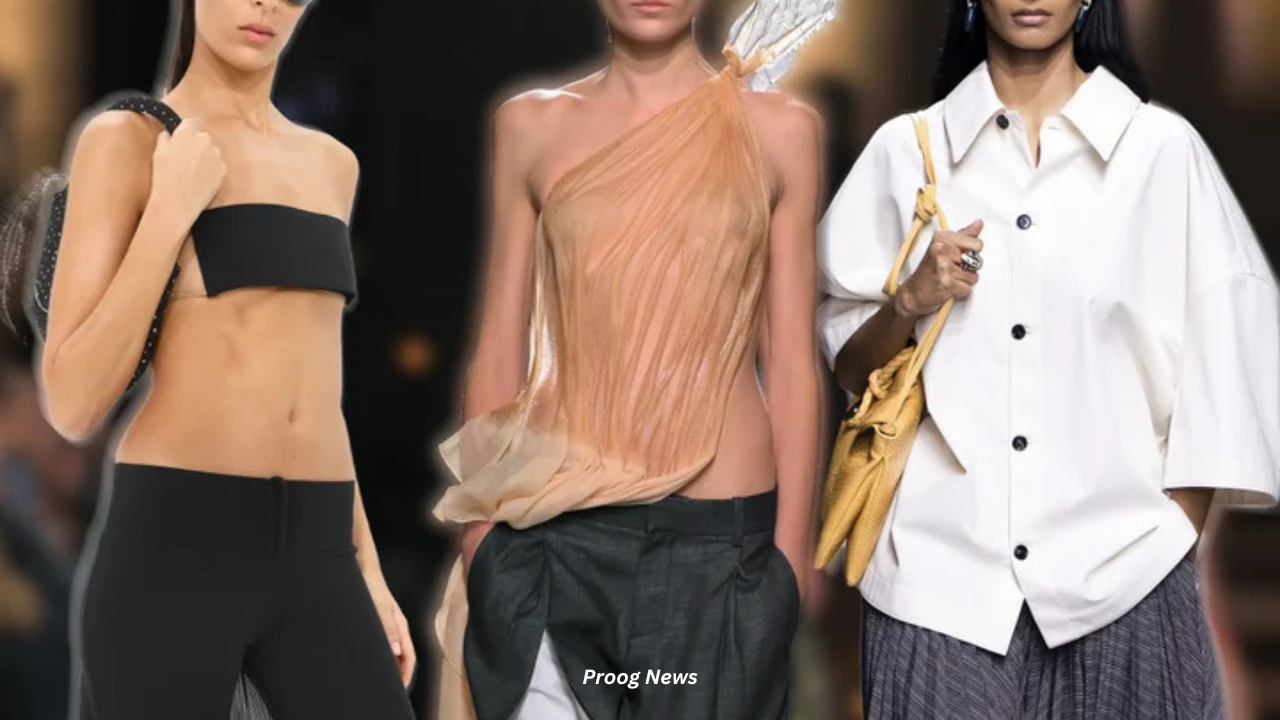These are the ways that fashion brands and advocacy groups think that tariffs, new rules, and new materials will affect the industry next year.
According to McKinsey & Co., fashion brands will care less about achieving net-zero emissions in 2025 than making money in a very competitive market. The sustainability professionals in the $1.7-trillion industry are in a tough spot.
Consumer research says that Generation Z “cares” about shopping in a way that is good for the environment. But when people shop, try to show that they do. T-shirts from Shein, Amazon Basics, and Forever 21 often cost less than a box of eggs. Clothes have never gone up in price. Clothing that costs a lot and is good for the environment is hard to sell.
And getting brands to buy large amounts of new, low-carbon materials that are innovative is hard, even if it costs them a few pennies more each.
The to-do list for fashion sustainability is long: Get rid of emissions. Make low-emissions materials that cost a lot bigger. Decarbonize supply chains that are made up of many small businesses that are often spread out over thousands of miles.
Logan Duran, vice president of ESG and sustainability at Coach parent company Tapestry, is keeping an eye on these trends: “Holistic decarbonization strategies that integrate and increase the use of environmentally preferred materials, low-carbon manufacturing, circular business model solutions, and the increased use of renewable energy across the entire value chain.” These trends show that these problems affect the whole system.
Here’s what other people who care about clothing sustainability told Trellis about what might happen this year.
Loving to hate fast fashion
“Fast fashion giants like Shein and Temu continue to face criticism about overproduction, textile waste, and the possibility of exploiting workers,” Tiffany Hua, senior analyst at Lux Research, said. “By 2025, I think the controversy will get worse, with calls for more information on production limits, the implementation of extended producer responsibility, and rules on openness.”
Still, Tricia Carey, who used to be the chief commercial officer of textile-to-textile startup Renewcell, doesn’t think things will get better any time soon. “I don’t think things will change in 2025 because most people don’t understand the problems in the clothing system,” she said.
Downstream effects surface
Fashion’s glut, which is caused by fast production and constantly changing trends, doesn’t seem to be going away any time soon. A huge amount of clothes that have been returned, unsold, or worn before are sent to developed countries by brands, wholesalers, and charities. The problem is getting worse because companies make too many cheap clothes that people throw away after seven years on average.
Things that thrift stores in the U.S. and other places can’t sell are sent to the Global South, which is a term for developing parts of the world. Beaches in Africa, Chile’s Atacama Desert, and other places are dirty because of these piles of clothes. There are places where people have turned used clothes into circular economy markets. The largest market is thought to be the Kantamanto Market in Accra, Ghana.
But on January 2, a fire destroyed two-thirds of the market.
“How the fashion industry handles this crisis will show us how ready they are to recognize Kantamanto’s important part in the global secondhand supply chain and in the fashion industry’s plans to go circular,” said Liz Ricketts, co-founder and director of the Or Foundation of Accra, a group that wants to “catalyze a justice-led circular economy.” “A community doing such important work should never be in such a state of emergency.”
More and more people want fashion brands, whose products are sold in and thrown away in the Global South, to take on more responsibility as producers.
“The truth is that there is too much clothing…” “We need to make it a priority to be clear about production levels, goals for lowering those levels, replacing new clothes with repaired or remanufactured ones, and setting a floor price for clothing,” Ricketts said.
Circular models continue
At the same time, companies like Patagonia and Dr. Martens are still working to promote circularity by running programs for reselling, fixing, and refurbishing items.
Hua of Lux said, “By 2025, I think these programs will be even more a part of retail strategies, with some brands focusing on selling long-lasting clothes and goods.” She also said that brands will have a hard time with resale strategies when the durability and value of a product don’t match up.
Nicole Rycroft, founder and executive director of the anti-deforestation nonprofit Canopy, said, “Brands are becoming more aware of the legal risks and sourcing instability that come with traditional ‘take, make, waste’ supply chains. We’ll see more of them using all the tools they have to change their supply chains to be circular and resilient in 2025.”
Innovators explore new materials
A lot of new fibers are being made from waste and bio-based materials. Katrin Ley, managing director of Fashion for Good of Amsterdam, says that making these early materials more widely used “requires collaboration, strategic investment, and a clear pathway to adoption.”
“Many innovators, including Infinite Fiber, Ambercycle, and Circ, are making big steps forward by coming up with new ideas that not only meet performance standards but also work with existing supply chains,” she said.
Hua of Lux thinks that recycled synthetic and cellulosic fibers will be used in more products, especially as recycling businesses like Carbios, Reju, and Syre get better at what they do.
Still, Beth Jensen, senior director of climate and nature at the non-profit Textile Exchange, says that progress needs to be made with traditional materials as well. “The industry needs to keep putting money into the often less appealing work of changing existing supply chains,” she said. “This is especially true for materials like polyester, cotton, and leather that are made in large quantities and have big effects.”






